
views
Measuring and Cutting the Lid

Purchase a clear plastic bin. Get a plastic bin with a lid online or from a department store. You should get a cage that’s at least 600 square inches. This will give it enough space to move around and play. You can keep dwarf hamsters together but you should increase the size of the cage accordingly. You should house Chinese and Syrian hamsters in separate cages.
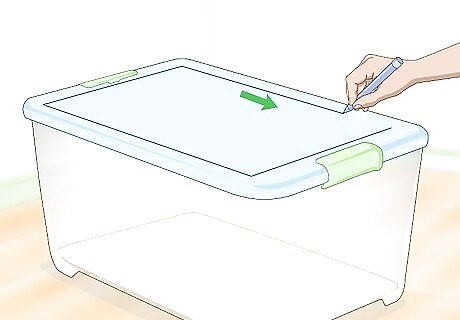
Draw an outline of a rectangle on the bin's lid. Leave a 2 in (5.1 cm) gap between the lines of the rectangle and the edge of the lid. This space will be used to attach wire mesh so that your cage is ventilated.
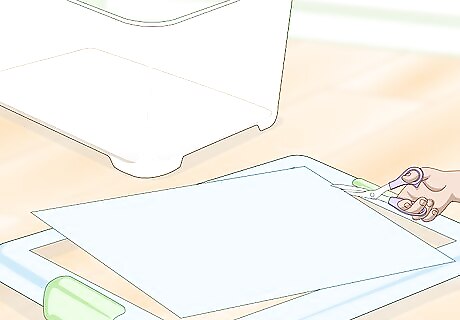
Cut out the center of the bin’s lid. Once you’ve drawn the outline, puncture the line with a knife or razor blade so you can start cutting it out. Then, use a pair of scissors to cut out the line and pop out the rectangular piece of plastic.
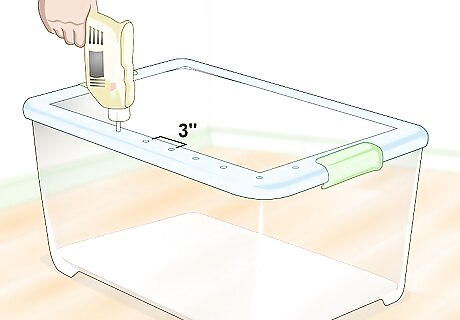
Drill holes every 3 in (7.6 cm) around the outside edge of the lid. Mark small circles around the outside edge of the lid every 3 in (7.6 cm) with a marker. Then, place the lid on the bin and use an electric drill with a ⁄4 inch (0.64 cm) or larger drill bit to make the holes in each of the markings. These holes will allow you to attach the wire mesh on the lid of the cage.
Attaching Hardware Mesh
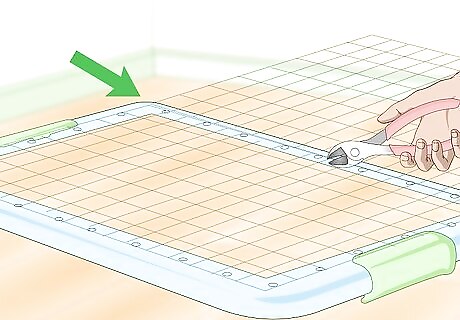
Cut out a piece of hardware mesh that’s the same size as the lid. Purchase hardware mesh online or at a hardware store. The mesh should be made of metal so that your hamster can’t chew its way out of the cage. Measure the length and width of the lid on your container with a tape measure or ruler. Then, cut out a piece of the mesh that’s the same size as the bin lid. Mesh will keep the cage ventilated without allowing space for your hamsters to escape. Use wire cutters or a strong pair of scissors to cut the wire mesh.

Attach the mesh to the lid with zip ties. Thread the zip tie through the mesh and then through the holes that you drilled in the lid. Secure the zip tie and pull on the end of it to tighten it to the cage. Repeat this process until you’ve attached the mesh to the lid at every hole.
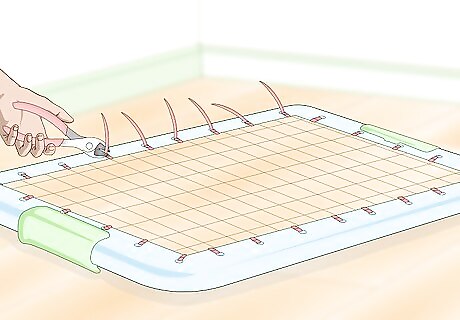
Snip the excess ends off the zip ties. Cut the ends of the zip ties so that they don’t stick out. Your hamster cage is now ventilated. Before you put the hamster in its new cage, make sure you set it up properly.
Setting Up the Cage

Wipe down the inside of the bin with a diluted bleach solution. Fill a bowl with cool water and a drop of liquid bleach. Wear a pair of gloves and dip a rag into the solution and wipe down the inside of the bin, the mesh, and the lid to disinfect it. Then, dry the inside of the cage with a rag or paper towel. Wiping down the cage with the bleach solution will prevent your hamster from getting sick from any harmful chemicals that may get on the bin when it’s being manufactured.
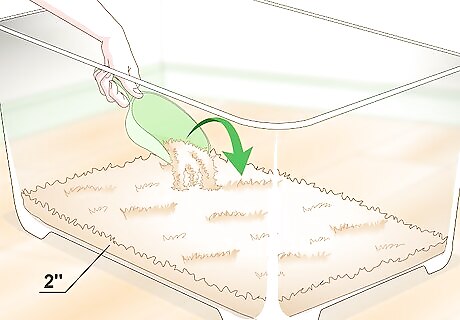
Place a 6 in (15 cm) layer of bedding in the cage. Bedding will absorb the hamster’s urine and will make a comfortable home for it. Purchase paper bedding, cellulose fiber, or aspen shavings online or from a pet store and pour it into the bottom of the cage. Even out the bedding until there is a 2–4 in (5.1–10.2 cm) layer. Don’t pack down the bedding so the hamster can burrow through it, use around 6-7 inches Avoid using pine and cedar shavings because it can give the hamster splinters and injure it. Use dye-free bedding to prevent your hamster from getting sick.
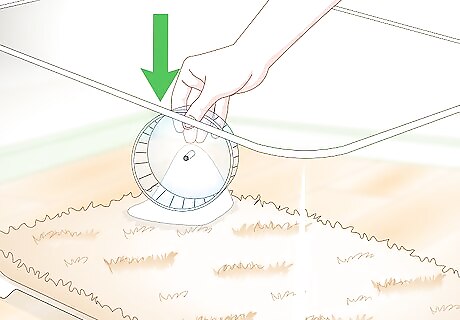
Get a hamster wheel to give your hamster exercise. A hamster wheel will allow your hamster to run around and exercise even if there isn’t a lot of room in its cage. Young hamsters need to exercise more than older hamsters, so make sure you have one so that your hamster can grow up to be healthy and strong. Get a 6.5 inches (17 cm) wheel for dwarf hamsters and get an 8 inches (20 cm) wheel for Chinese, Syrian, and other large hamsters.
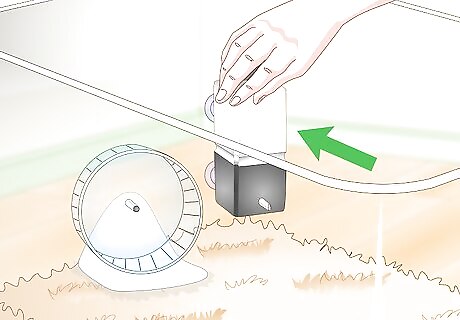
Install a water bottle to give your hamster a water source. Buy a hamster water bottle online or at a pet store. Attach command strips or velcro to the back of the bottle. Then, attach the other side of the velcro inside of the cage in an area that your hamster can reach. Hamsters like fresh water, so empty the bottle and replace it every day. Do not fill a bowl with water because you hamster could drown.
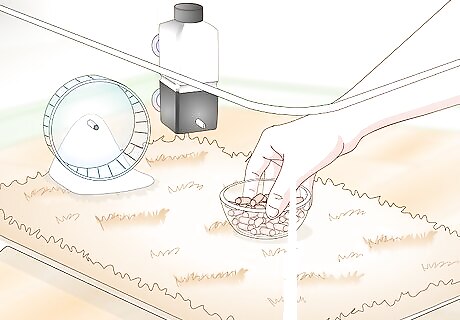
Put a bowl with food at the bottom of the cage. Get a small-pet bowl online or from a pet store and place it on top of the bedding in your cage. You can feed your hamster 10 g (0.35 oz) of hamster feed each day. You can also occasionally supplement its diet with some fruits and vegetables. Hamsters will store food in their cheeks and hide it around the cage. Replace fresh food, like fruit, every day to prevent it from getting moldy.
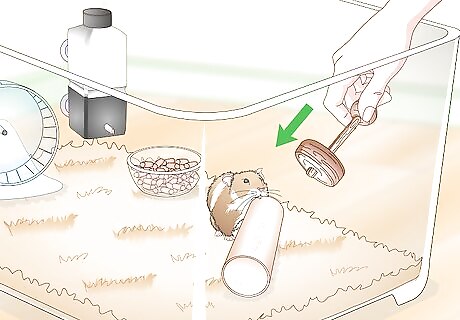
Give the hamster toys and accessories to keep it occupied. You can get small houses, wood chews, wooden balls, and other accessories for your hamster. This will give it something to do and give it a place to hide food and hide in. A hamster that has places to hide in their cage will be more relaxed than a hamster without toys or accessories.
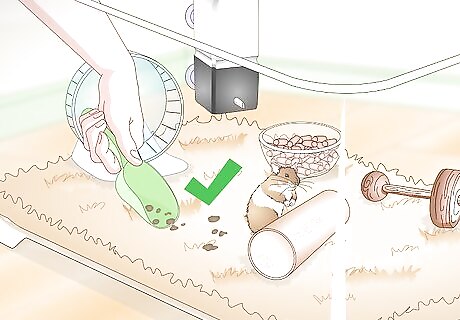
Spot clean the cage daily and replace the bedding once a week. Hamsters will usually go to the bathroom in the same spot in their cage. Clean this area daily to make your weekly deep cleaning easier. Replace the bedding and wipe down the inside of the cage with a diluted bleach solution once a week to keep it clean. Keeping your hamster cage clean will prevent your hamster from getting sick and will stop bad odors from forming.


















Comments
0 comment